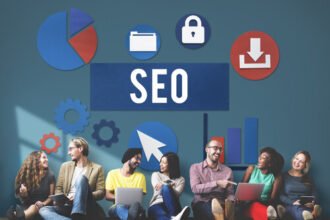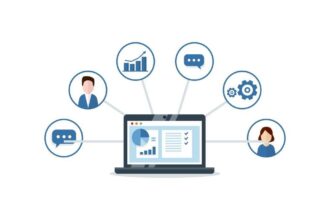There’s a stereotype that nonprofits are outdated when it comes to technology. However, many are proving that assumption wrong, as nonprofits use big data in their organizations regularly. Here are five ways organizations can do that even if they don’t have extensive financial resources.
1. Use Readily Available Data Sources
Indeed, it can be costly to buy a big data platform and use it to collect data about a nonprofit. That’s why some decide to tap into big data sources that already exist.
Amazon offers publicly available data sources for free, as does the Pew Research Center and the U.S. Food and Drug Administration, among many others.
These sources are called “open data.” Recently, the IRS contributed to the availability of open data when it provided information from a tax document called Form 990.
It asks for details about a nonprofit’s structure, expenses, personnel and more. That information could highlight some of the factors that make nonprofits successful or give analysts cues to look deeper at what the forms show.
A group called the Nonprofit Open Data Collective, a consortium of nonprofit representatives and researchers, is working to analyze electronically submitted Form 990 data and make it more useful to everyone who wants to see it.
One of the daunting challenges they overcame was reconciling the more than two dozen electronic formats the IRS uses to describe Form 990.
2. Take Advantage of Tailored Resources
Nonprofit representatives might be interested in finding out how big data could help their organizations but have no idea where to start and lack the budgets for hiring instructors.
Foundation Center is a group that addresses this common problem by not only providing a substantial, reliable source of data for free but also teaching and advocating for data knowledge for people in the nonprofit sector.
Besides facilitating training at libraries and universities around the United States, Foundation Center offers online courses through an arm called GrantSpace.
It’s a place where people can learn about all kinds of topics relevant to today’s nonprofits, ranging from corporate giving to using Bitcoin and much more.
Sometimes, organizations that help nonprofits get familiar with data also assist them in finding statistics for economic impact studies. DataArts is an organization that works with arts and cultural organizations in the nonprofit realm.
One study that used information from DataArts found the arts and culture sectors in Philadelphia collectively impact the city’s economy with a $3.3 billion boost, plus the addition of 44,000 full-time-equivalent jobs.
A similar study could be exceptionally beneficial to a nonprofit that needs to convince stakeholders the work it does is valuable and meaningful to an overall community.
3. Investigate Vendors That Are Familiar With Nonprofit Needs
There are companies that exist to help nonprofits handle their software and storage requirements. They understand that serving nonprofits is not the same as dealing with a corporate client with abundant resources, for example.
Similarly, some providers of big data platforms make them more feasible for nonprofit clients by offering specially priced licenses or providing feature sets that are particularly useful for people in the nonprofit sector.
If an organization is moving toward the possibility of incorporating big data into its work, doing so with a vendor that regularly works with nonprofits could translate into highly positive relationships.
4. Rely on It in Ways Relevant to Their Work
One way nonprofits may be able to justify the additional expenses associated with a big data platform is to figure out how access to that data could improve their outcomes.
The Jane Goodall Institute works to save the chimpanzee population in Africa and depends on a tool called Open Data Kits.
It also depends on everyday people throughout Africa to monitor changes that could threaten the chimps, which allows the foundation to understand where the need is greatest.
In contrast, UNICEF offers data to the public on its website, allowing people to see how statistics — such as infant mortality rates — are improving over time. Viewing the hard data for themselves might encourage individuals to give generously when it’s time for fundraising campaigns.
Having data available for stakeholders to see could be helpful if the public lacks trust in some nonprofits or wants evidence that those entities are doing good things for the people benefitting from the service. Moreover, data could show that there’s a pressing need for what an organization does in society.
Statistics also show more than 10 million people in the nonprofit sector depend on big data to drive decision-making. Like the Jane Goodall Institute discussed above, other organizations could let data highlight regions or needs they might otherwise miss.
5. Participate in Specialized Programs
Because of a growing interest in big data in the nonprofit realm, some people from the for-profit and nonprofit industries are coming together to figure out the best ways to use big data to solve systemic social issues affordably.
An event called the UpPrize Social Innovation Challenge gave seven winning projects a total of $1 million in development funding.
The organizations that win get the benefits from the finances, plus the ability to use the fact that they won the prize when writing promotional blurbs about their groups.
There’s also DrivenData, which takes a two-pronged approach to solve the issues facing nonprofits and other groups trying to improve the world with the help of data. One contest winner harnessed data to predict changes in penguin populations.
In any case, the group requests help from a global freelance community of data scientists and similar professionals. It tasks them with submitting statistical models for a nonprofit in need.
Then, DrivenData goes further by supporting the chosen organization with implementing the winning model in ways that support the organization and its goals.
DrivenData’s projects typically last months, so they aren’t short-term solutions for nonprofits. But, the resources and insights from data experts all over the world could give nonprofits the momentum they need to start using big data more effectively or rely on it for the first time.
Resources Available for Creative-Minded Organizations
These examples prove that when nonprofits think creatively and explore the available possibilities, they can use big data to their advantage in numerous ways.
Then, their organizations can grow and meet their targets.










